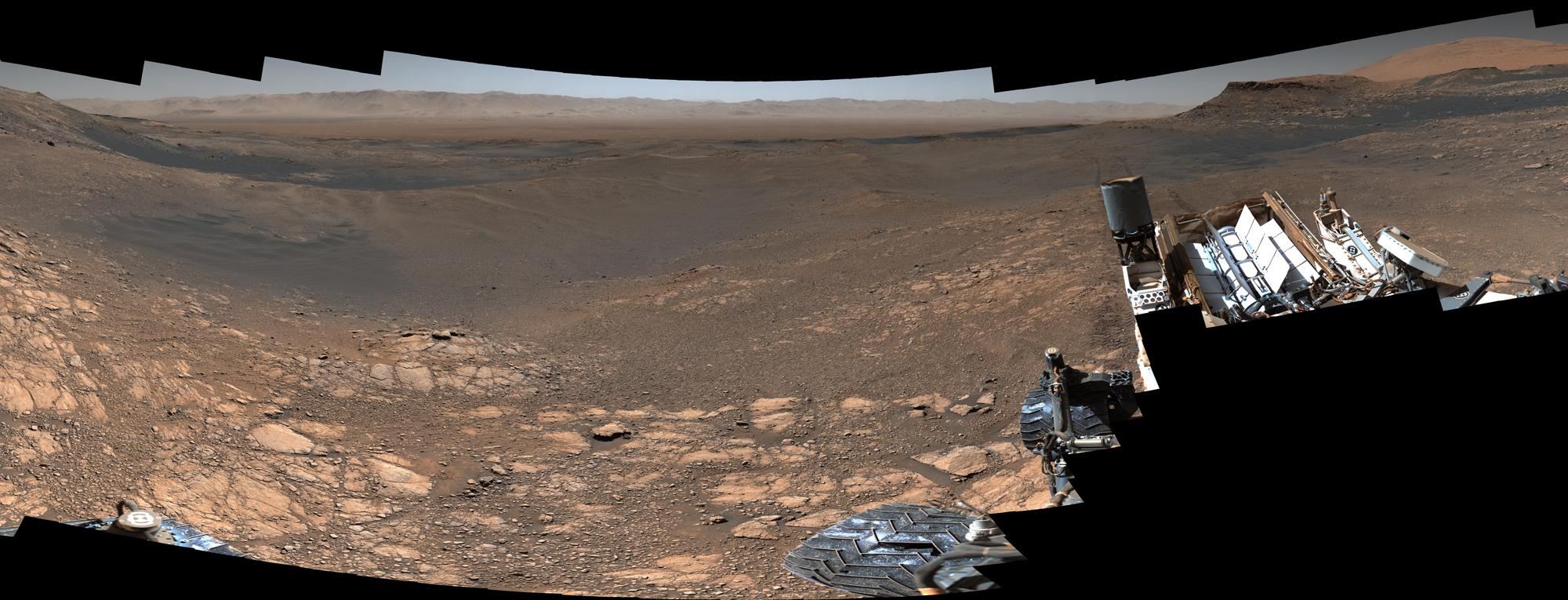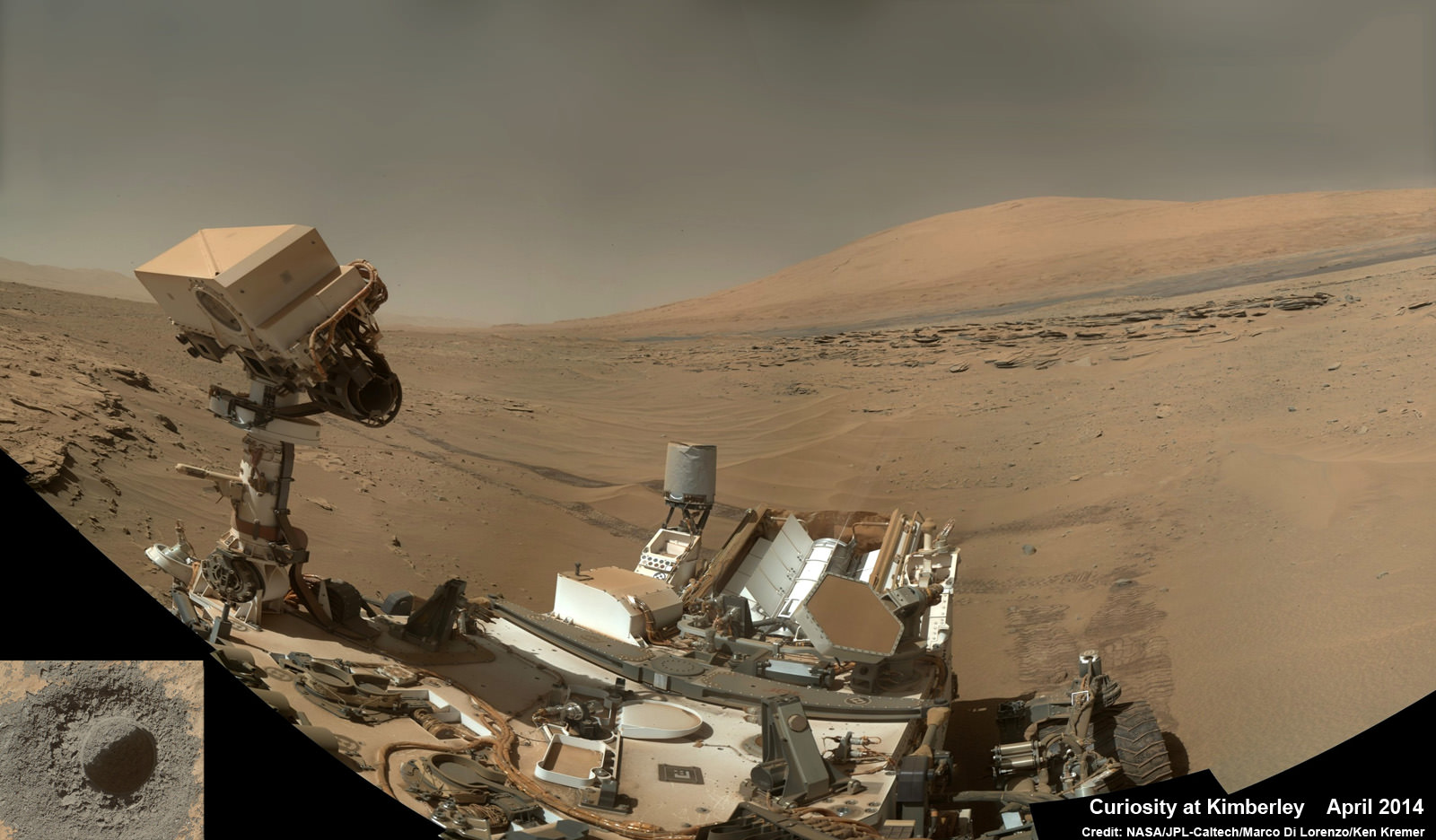Mars Panorama – Curiosity rover: Martian solar day 613 in Out of this World
The Curiosity rover looks like she’s concentrating hard on her tasks on Mars, and now you can zoom around and see what it would look like to be standing next to the rover in Gale Crater.
This new interactive image put together by panoramacist Andrew Bodrov from Estonia uses some of the latest imagery from Curiosity’s MAHLI camera, taken on Sol 610 (April 27, 2014 back on Earth) and additional images from the rover’s 34-millimeter Mast Camera to create the full panoramic scene. The mosaic, which stretches about 30,000 pixels width, includes 138 images taken on Sol 610. Bodrov used 138 images and it stretches about 30,000 pixels wide.
You may wonder how the rover took this picture of itself without the camera or the robotic arm showing up in the images. It’s done by combining multiple pictures taken with the MAHLI camera that is mounted at the end of the robotic arm. “Wrist” motions and turret rotations on the arm allowed MAHLI to acquire the images, and the arm was positioned out of the shot in the images or portions of images used in the mosaic.
Check out this video explanation by NASA:
You can see more of Bodrov’s wonderful panoramas in past articles on Universe Today.


